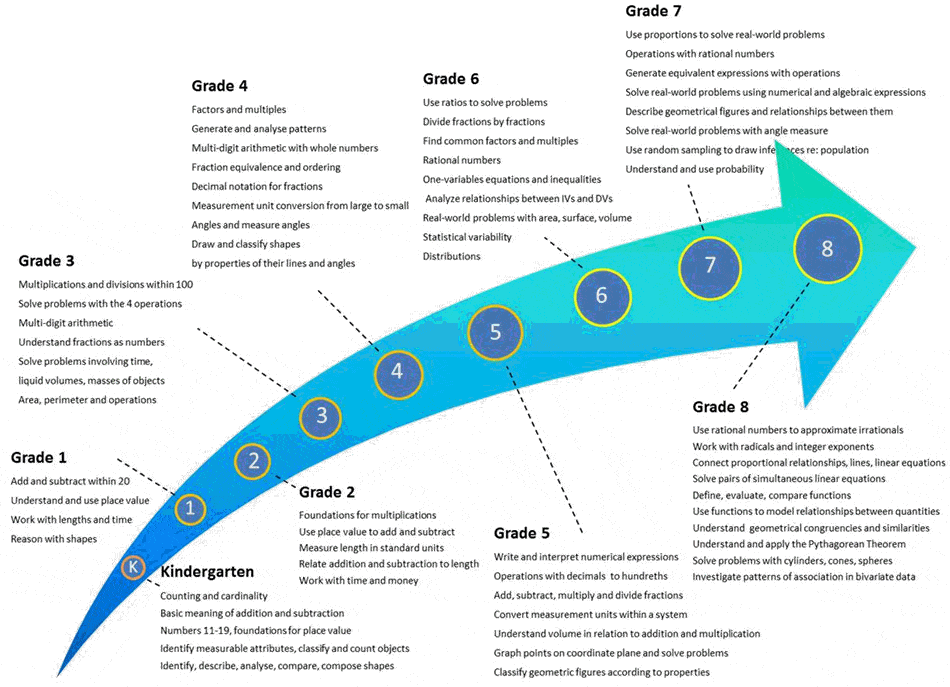Curriculum Development and Expected Achievement
In recent years there has been a focus on the mathematics achievement across the globe. In 1995, the Trends in International Mathematics and Science Study (TIMSS) conducted its first international assessment of the mathematics and science knowledge of 4th and 8th grader (loosely, ages 9/10 and 13/14, respectively) students around the world. The assessment is conducted every 4 years with the most recent in 2011. Although one of the outcomes of these surveys is to rank different countries according to the level of achievement, it also serves to provide information on curricula and how they can be developed.
Until recently mathematics curricula in the United States had been developed by each of the states and there was no national curriculum. However a state-led effort to improve standards has developed the new Common Core Standards Initiative in mathematics. This aims to become the first national mathematics curriculum and is due to implemented in 2014.
The Mathematics Curriculum in the United States.
The Common Core Standards Initiative has proposed a detailed curriculum which outlines what students should be learning at each grade from Kindergarten to Grade 8. The criteria for the standards were developed from academic research; analyses of which skills are required of students entering college and workforce training programs and by looking at standards from high achieving nations and data from the TIMSS in collaboration with some of the teaching bodies within the US.
There are four key domains in the primary school years: Operations and Algebraic Thinking; Number and Operations in Base 10; Measurement and Data; Geometry. In addition Counting and Cardinality is included for Kindergarten and Number and Operations is included for Grades 3 and 5. Within each domain, there are several standards, clustered into related standards.
One of the guiding teaching principles made explicit by the Core Standards is teachers’ focus on ‘mathematical understanding’ as the royal pathway, along with procedural learning, to meaningful achievement. This means that rather than focusing on memory for facts and procedures, a kind of rote learning, students should be able to explain what they know and how they were able to work it out. Thus the focus of the curricula is not purely on the child’s ability to reach and provide the correct solution to a given problem, but shifts towards the procedural or mechanic learning associated with mathematical understanding. Specifically assessing mathematical understanding means assessing: 1) the ability to generalize knowledge to novel situations, 2) the ability to explain the underlying meaning of procedures.
Expected Trajectory
The new US curricula provides clear and detailed targets for arithmetic development and how children will build up an understanding of this complex discipline.

The expandable image above shows that at the elementary level the focus is on understanding number and operations to build a unified understanding of the number system by middle school. As a result of this focus, handling data and pattern recognition are not included in the standards for elementary school. Having built a strong foundation in the number system, in Grade 6 the focus turns to learning in geometry, algebra and probability and statistics, with the greater focus on algebra in grade 8. As the curriculum is set out for each grade, they provide a clear progression within and between the grades such that all children and teachers can gain a fuller understanding of the different components of mathematics.









